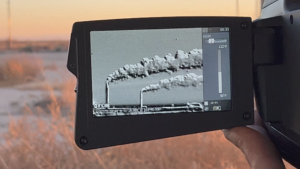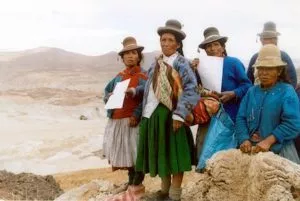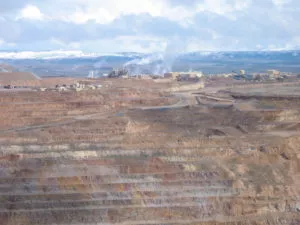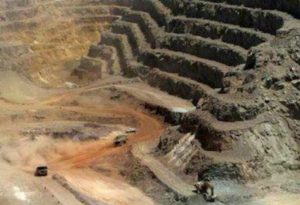REPORT: Unveiling Brazil’s Hidden Emissions Energy Underbelly
Oil & Gas impacts and movements to stop them in Brazil
From April 16 to May 9, 2023, a team of experts, journalists and advocates traversed the vast terrains of Brazil — spanning its Northeastern states, bustling Rio de Janeiro, and picturesque South — documenting evidence of pollution harm from the country’s fossil fuel facilities. Earthworks conducted field investigations at 42 oil & gas, coal and manufacturing sites in 22 municipalities across 7 states. The investigation visually captures harmful impacts of companies like Petrobras and 3R Energy but also chronicles the resistance of Indigenous, Black, and other frontline communities.
Earthworks Field Advocates conduct investigations using an Optical Gas Imaging cameras, state-of-the-art and independently verified technologies, capable of detecting health-hazardous volatile organic compounds (VOCs), including known cancer-causing toxics, and greenhouse gases, including methane gas that is 80x more powerful at atmospheric warming to CO2, that occur during routine oil and gas operations, or because of faulty equipment, accidents, and intentional releases by operators. Every Earthworks Field Advocate is also certified to analyze the data OGI cameras capture.
Dive into our journey, where the visuals of emissions, mining impacts, and corporate maneuvers come alive, urging us to reconsider the true cost of our energy consumption.
The findings of this investigation challenge prevailing narratives and shed light on industry’s harmful impact on local communities, the environment, and demands a re-evaluation of Brazil’s long-term energy strategy. The findings conclude that methane and health-hazardous volatile organic compound (VOC) emissions are not well-regulated and are polluting across the oil and gas supply chain in Brazil. Put in human terms, this means government policies supporting the expansion of oil and gas are increasing the likelihood of health impacts such as eye, nose, and throat irritation, headaches and nervous system effects, organ damage (including kidneys, brain, liver, and lungs), and various cancers – often on historically marginalized communities. The climate harms of this pollution include increased exposure to heat waves, floods, droughts, and other extreme events, increased incidence of infectious diseases, degradation of quality of air, food, and water, increased conflict and resource scarcity, and increased stresses to mental health and well-being – including for peoples not immediately on the frontlines of fossil fuel infrastructure.
Our report from Brazil is below…
Findings from Brazil
Area/Region surveyed
- Northeast (Ceará, Rio Grande do Norte, Sergipe)
- Rio de Janeiro state
- South (Paraná, Santa Catarina, Rio Grande do Sul)
Key Partners in Collaboration
- Instituto Internacional Arayara is nonprofit partnership between scientists, engineers, urban planners and environmentalists with connections to climate justice and environmental organizations across Brazil and throughout Latin America, as well as close ties to Indigenous and Black communities (fishing and Quilombola groups) and residents of impacted communities.
Evidence collected
Optical Gas Images of emissions pollution were from tank batteries, wells, refineries and thermoelectric plants fired by coal. Further photographic documentation was taken of visible mining particulate matter and tailings impacts.
Investigations included facilities owned by Petrobras, 3R Energy, and others that bought at Petrobras’ cheap auctions under the Bolsonaro government; KDP Turkey offshore gas facility in Baía de Sepetiba; CSN- biggest Steel Companies in the country; Ternium Brasil- a fired Iron company, several coal-fired thermoelectric plants and steel plant in northeast, with its port; and one of the biggest petrochemical complexes in south of Brazil.







